Meer dan metalen bikini’s
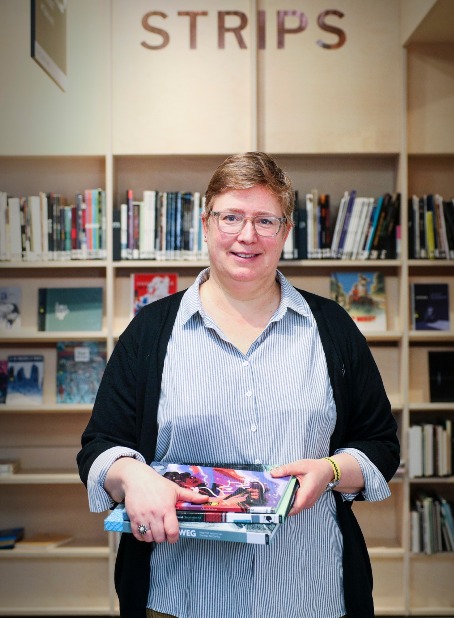
Er zijn veel boeken te zien op de kamer van Barbara Postema. Maar anders dan je bij een docent Engels van de Faculteit der Letteren Shakespeare of Chaucer zou verwachten, staan haar planken vol met comics, strips en graphic novels zoals Fun Home, Persepolis en Watchmen. Ook klassiekers, maar dan binnen de comics-wereld. Postema is stripwetenschapper en zou graag zien dat de maatschappij én de academische wereld deze boeken eindelijk eens op waarde gaan schatten. Want strips zijn meer dan alleen Galliërs, smurfen en superhelden. In de aanloop naar Internationale Vrouwendag betoogt ze dat strips zeker niet alleen een 'jongensding' zijn.
Tekst: Marrit Wouda, Corporate Communicatie / Foto’s: Henk Veenstra
Strip, comic, graphic novel?
Alledrie zijn vormen van beeldverhalen, al denken mensen bij comics meer aan superheldenstrips van Marvel en DC. Een graphic novel is één afgerond beeldverhaal, vergelijkbaar met een roman.
Voor op de leeslijst
Er zullen maar weinig scholieren een graphic novel mogen lezen voor de leeslijst, en dat is best zonde, meent Postema. ‘Je zou kunnen denken: het zijn plaatjes, daar hoef je niets bij te bedenken. Maar dat is simpelweg niet waar! Er zit minder tekst in een beeldverhaal, maar je moet het verhaal nog steeds zélf, in je eigen verbeelding, animeren en levend maken.’ Strips lezen is, juist omdat er minder woorden zijn, een actieve vorm van lezen: ze bestaan uit losse plaatjes, en niet alle details worden getekend of beschreven. ‘Je moet puzzelen, verbanden leggen en visuele communicatie interpreteren. Het traint een heel andere vorm van leesvaardigheid, die echt ontzettend nuttig is,’ zegt Postema. Maar helaas: ‘De strip is populair, maar wordt toch vooral als lectuur gezien, niet als literatuur.’
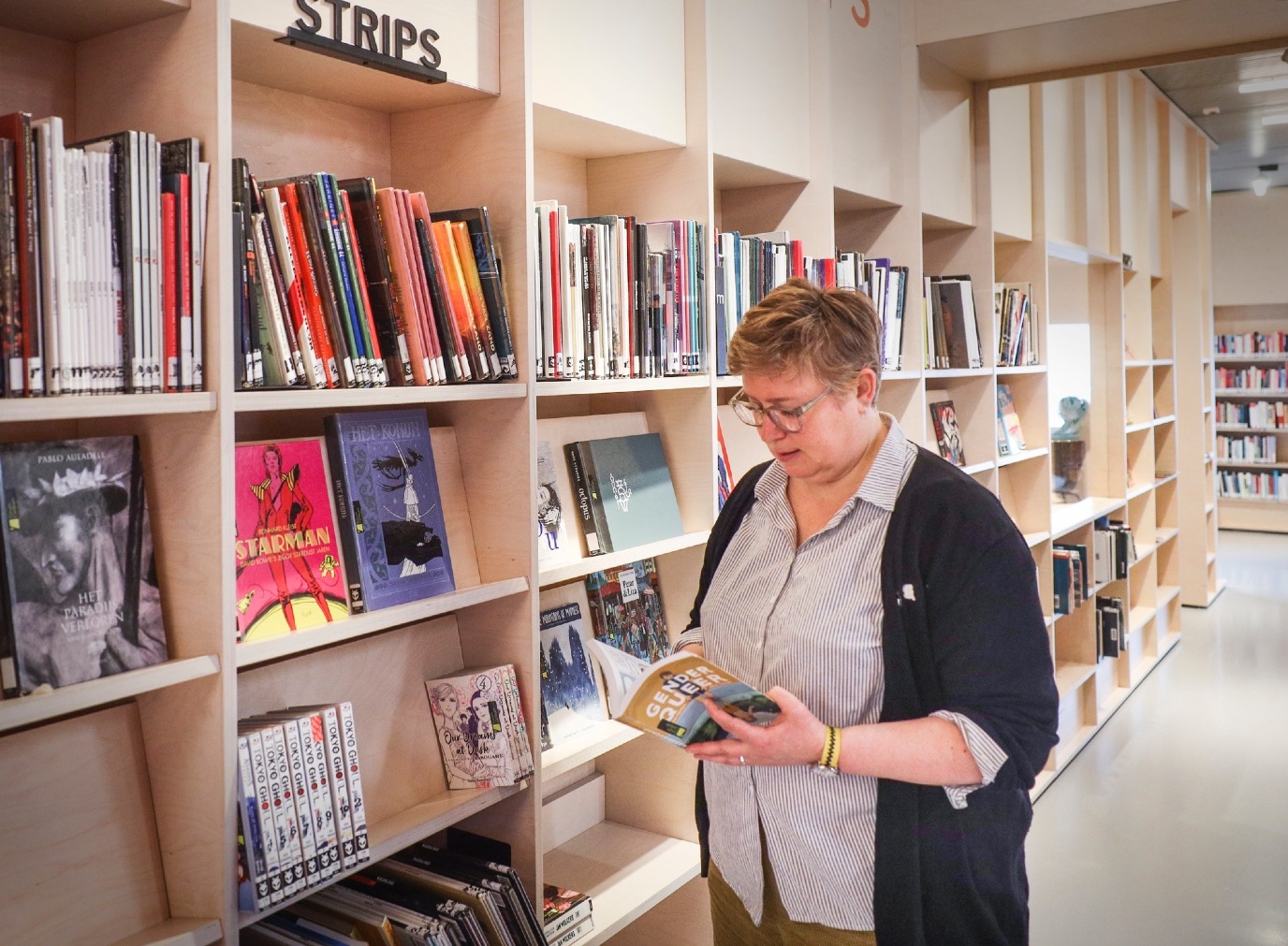
Niet alleen maar grappig
‘Ik denk dat we inmiddels wel weten dat strips lang niet altijd alleen maar grappig zijn. Net als romans en films kunnen strips complexe, gelaagde verhalen vertellen,’ legt Postema uit. ‘Maar strips gebruiken daar andere middelen voor.’ Sterker nog, juist ingrijpende, serieuze verhalen kunnen in stripvorm goed verteld worden. De graphic novel Maus van Art Spiegelman, die het verhaal van de holocaust vertelt, is daar een perfect voorbeeld van, volgens Postema. Niet alleen vanwege de visuele metafoor die Spiegelman gebruikt (joden zijn muizen, nazi’s zijn katten), maar ook omdat de verschrikkelijke gebeurtenissen in vernietigingskampen getekend zijn. ‘In een live-action film zou zoiets té grafisch zijn, maar in getekende vorm bouw je een afstand in.’
It’s a man's world
Naast dat we strips nog niet echt op waarde schatten, is het ook nog steeds echt een mannenwereld. Vooral superheldenstrips worden vooral gemaakt en gelezen door mannen en jongens. Het idee: meisjes lezen dat toch niet. Onzin, volgens Postema. ‘Er is voldoende bewijs dat meisjes óók geïnteresseerd zijn in (superhelden-)strips, en dat was ook het geval in de beginperiodes van DC en Marvel.’ Volgens Postema haken meisjes af, omdat die strips vooral zo aantrekkelijk mogelijk voor jongens en mannen worden gemaakt. Stripproducenten spitsten hun werk door de tijd meer en meer toe op jongens en mannen, waardoor we, volgens Postema, álle strips (niet alleen die over superhelden) als een ‘jongensding’ zien. ‘Los van dat het seksistisch is, is het ook zonde! Want zo negeer je al snel de helft van je potentiële markt!’
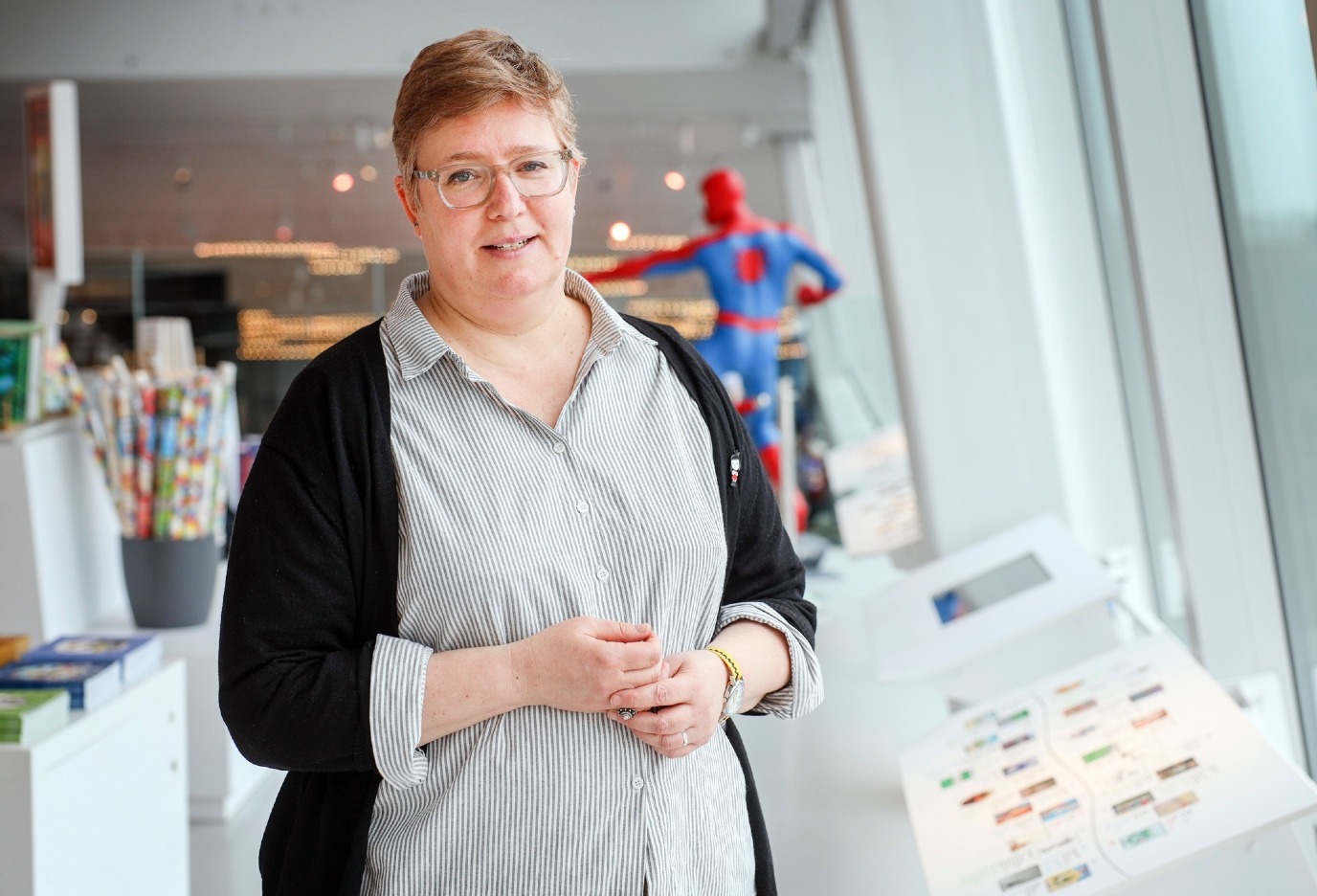
De brokeback pose en metalen bikini’s
Door die ‘male gaze’ wordt de functie van vrouwelijke personages vrijwel altijd gereduceerd tot lustobject. Zelfs als ze zelf de hoofdrol heeft, draait het vooral om haar uiterlijk. ‘Het liefst met een mooi figuur waar je zo veel mogelijk van kan zien,’ zegt Postema. Daar wordt dan weleens tegenin gebracht dat mannen er ook belachelijk uitzien. ‘En dat klopt, niemand heeft spieren óp zijn spieren!’ lacht ze. ‘Ook dat is een soort karikatuur. Maar maar wel een die kracht uitstraalt, terwijl de karikatuur van vrouwen – die binnen zo’n verhaal ook krachtig zouden moeten zijn – alleen maar sexiness is.’
Om dit te illustreren laat ze twee collages zien. Een van vrouwen getekend door vrouwen: het zijn gevarieerde beeltenissen van vrouwen in een tal van situaties. Een tweede collage toont vrouwen uit superheldenstrips, getekend door mannen. Het is een groot contrast: vrouwen gehuld in metalen bikini’s of extreem strakke pakjes, in oncomfortabel lijkende poses die zowel borsten als billen goed laten zien. ‘Dat wordt ook wel ‘brokeback’ genoemd, omdat je je ruggengraat moet breken om die pose aan te nemen,’ zegt Postema, met een grimas.
Klik met de rechtermuisknop en kies 'open in nieuw tabblad' om een grotere versie van de collage te zien.
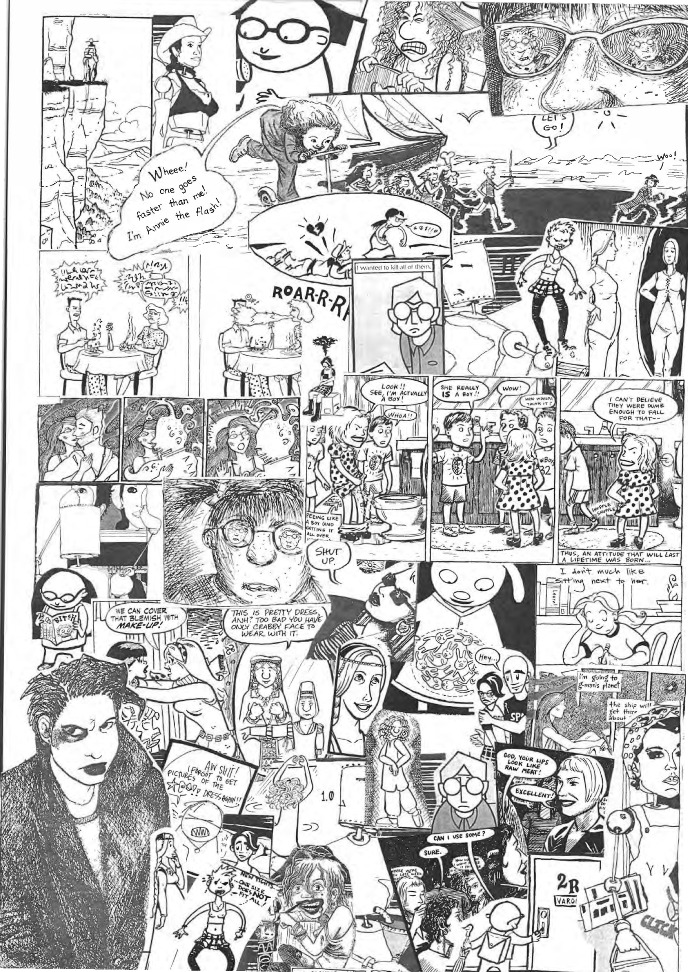
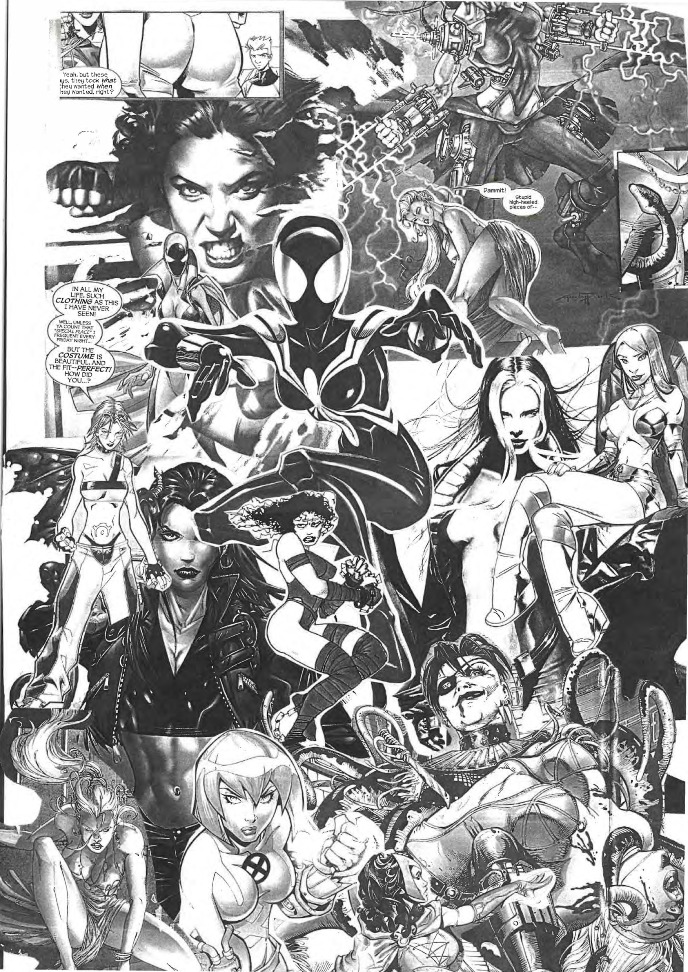
Vrouwen in koelkasten
Dan is er ook nog het pijnlijke fenomeen van ‘fridging’. Dat verwijst naar een Green Lantern comic waar de mannelijke hoofdpersoon zijn vermoorde vriendin aantreft in een koelkast. Comics fan (en later Wonder Woman-schrijfster) Gail Simone startte een website, Women in Refrigerators, om zo bij te houden welk leed vrouwen in comics allemaal overkwam. Een boel, zo bleek. Seksueel geweld, ontvoering, marteling en moord: de vrouwelijke karakters dienen vooral als slachtoffer om zo mannelijke karakters te aan te zetten tot actie. In het geval waar de vrouwen zelf hoofdpersoon zijn, overkomt hun vaak veel van hetzelfde om hen te motiveren. ‘Mannen hebben deze vorm van motivatie blijkbaar niet nodig,’ zegt Postema. ‘Het is niet heel raar dat meiden zich dan niet welkom voelen, als lezer én als maker.’
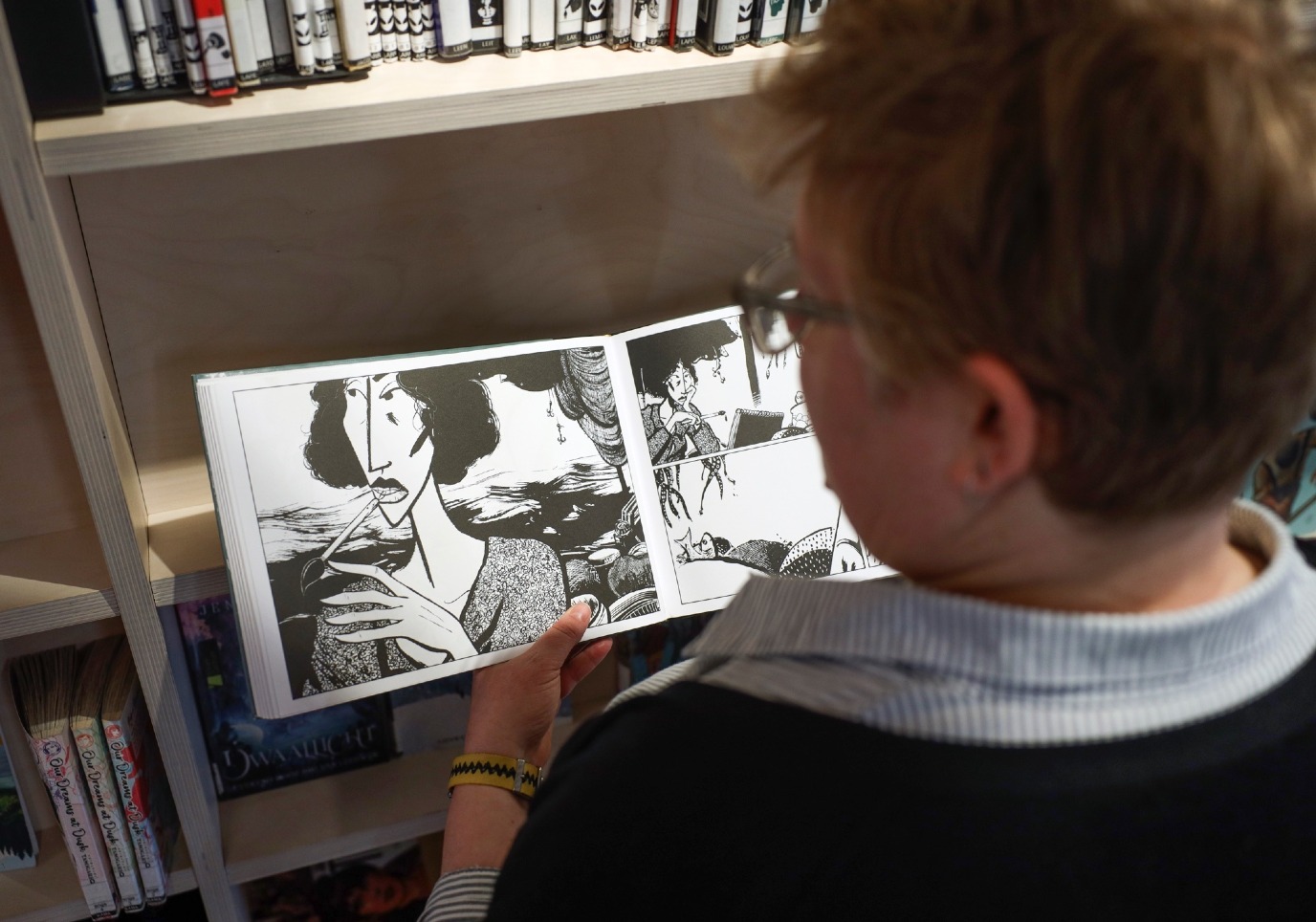
Voor iedereen
Postema ziet de stripwereld gelukkig wel veranderen, door kritiek van lezers én makers. De jury van de ‘Grand Prix de la ville d'Angoulême’ - een prestigieuze stripprijs - meende lange tijd dat er ‘gewoonweg’ geen vrouwen waren die in aanmerking kwamen voor de shortlist, laat staan de prijs. In 2016 trokken 12 van de 30 genomineerden zich terug uit protest omdat de shortlist uitsluitend uit mannen bestond. Prompt werden er 6 vrouwen toegevoegd aan de lijst. ‘Sindsdien zijn er meer vrouwen die op de shortlist staan en zelfs ook winnen,’ vertelt Postema. Dat helpt, meent ze. ‘Vrouwelijke stripmakers zijn steeds meer zichtbaar, en dat inspireert andere vrouwen ook.’
Het is fijn dat er meer verhalen voor en over vrouwen verteld worden, maar we moeten niet denken dat dat dan allemaal ‘vrouwenstrips zijn’. ‘Het zijn ook gewoon verhalen voor iedereen,’ zegt Postema. 'Aimée de Jongh die ‘Dagen van Zand’ en een stripversie van ‘Lord of the Flies’ maakte, is daar een goed voorbeeld.’ Postema hoopt dat de lijn die inmiddels is ingezet door blijft gaan, zodat we over een tijdje echt met andere ogen naar strips kunnen kijken: een unieke en waardevolle vertelvorm, voor iedereen.
More information:
Meer nieuws
-
18 november 2025
Een wifebeater? Hoe taal schadelijke ideeën versterkt
-
03 november 2025
Menopauze in perspectief: Hoe de media onze beleving beïnvloeden
-
23 oktober 2025
Negen wetenschappers van de RUG ontvangen Vidi-beurs
